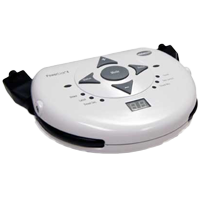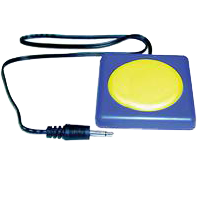What are Environmental Adaptations? Environmental adaptations allow for manipulation of something in the environment that would otherwise be difficult or impossible to do due to a disability.
What are Environmental Controls? Environmental controls provide people with disabilities the ability to start, stop, or adjust electric or electronic devices.
Where and When do I need to use use Environmental Adaptations or Controls? AT for environmental adaptations or controls is typically used to be able to operate battery-operated or electrical devices that require manipulation of something to be able to operate the device. An adaptation or control is put in place to make operating the device easier based on the individual’s abilities. Devices that may need an adaptation or control can be found in all areas of a person’s home, the workplace, and the community.
Who needs to use Environmental Adaptations and Controls? AT in this category is typically beneficial for someone with a physical disability that limits his upper extremity control. Fine motor delays, spinal cord injuries, neuro-degenerative disorders are a few of the disabilities that might benefit from Environmental Adaptations & Controls. Anyone with a condition that limits strength and/or endurance may also benefit from this AT category.
Why are Environmental Adaptations & Controls important? These adaptations and controls can reduce or eliminate the need for human assistance in operating everyday battery-operated and electrical devices. Increased independence with everyday tasks results in increased self-efficacy which can carry-over into other aspects of an individual’s life.
Resources for Environmental Adaptations & Controls
AT3 Center Videos on Environmental Adaptations & Controls
EasterSeals Crossroads -
INDATAProject TechTip Videos
Easter Seals Crossroads has been providing assistive technology solutions in Indiana since 1979. In 2007, Easter Seals Crossroads partnered with the State of Indiana, Bureau of Rehabilitative Services to establish the Indiana Assistive Technology Act (INDATA) Project. The INDATA Project offers excellent videos and Podcasts that provide timely updates on new assistive technology.
Here's INDATA's YouTube video playlist for Tech Tips for Independent Living (similar to environmental adaptations and controls).
INDATA also offers three Podcasts that you can listen to, or subscribe to, on this page. At the top right of any of these pages you can search for a specific disability category.
The AT3Center.net wishes to thank the INDATA Project for their expertise and excellence in advancing access and awareness of assistive technology.
Information on this page addresses Assistive Technology for people with Environmental Adaptations & Controls disabilities in...
EDUCATION | EMPLOYMENT | COMMUNITY LIVING
(click the titles above to jump to the content area)
EDUCATION

Talking Points for Environmental Adaptations & Controls Assistive Technology in Education
The category of Education encompasses children - young and old - who are participating as a student whether at the pre-school, elementary, middle/junior/high school levels as well as institutions for higher education. The following talking points are most applicable to students grades preschool through high school.
For children transitioning into the public school at age 3 - To ensure successful AT transitions for children turning 3 years old, it is important for any AT the child is currently using or may need to use in school, whether written into the child's Individualized Family Service Plan (IFSP) or not, be incorporated into the child's Individualized Education Program (IEP). You'll find this information in the Community section below.
For students transitioning into the community or employment settings upon high school graduation - To ensure successful AT transitions for students aging out of school services, it is important for any AT the student is currently using or may need to pursue employment outcomes, whether written into the child's Individualized Education Program (IEP) or not, be incorporated into the student's Individualized Plan for Employment (IPE). IPEs are developed through collaboration with the state vocational rehabilitation agency using a Vocational Rehabilitation (VR) Counselor. You'll find this information in the Employment section below.
Situations Where a Child Might Need Assistive Technology for Environmental Adaptations & Controls:
School Environment
- Operating toys
- Operating basic kitchen appliances
- Operating computers
- Communicating with teacher
- Operating lights
- Controlling music and video players
Socialization
- Playing games
- Operating a Speech-generating device
Family / Home Environment
- Operating toys
- Operating basic kitchen appliances
- Operating computers
- Operating lights
- Controlling tv, music and video players
Community
- Church or Sunday School
- Movie theater
- Grocery store
- Doctor's office
- Plays or musicals
- Dining out
- Other family settings
Solutions for Students with Physical Limitations to Control and Maneuver in their Environment
(click to open the accordions below)
| Helpful Links & PDF Resources |
|---|
| Christopher & Dana Reeve Foundation |
| Disabilities, Opportunities, Internetworking, and Technology |
| Making Your Home Wheelchair Accessible |
| Steeper |
| Video/Webinar/Podcast Resources |
|---|
| Video: AT Assessment Made Easy |
| Video: Free to Low-Cost Assistive Technology Solutions |
Talking Points for Environmental Adaptations & Controls Assistive Technology in Employment
The category of Employment encompasses those people of working-age who are currently employed or who are seeking employment. The following talking points may be applicable to individuals with disabilities as well as employers. When matching a person to a piece of assistive technology, one can use the Human Activity Assistive Technology (HAAT) model. This model has been used below in the sample case studies.
For students transitioning into the community or employment settings upon high school graduation - To ensure successful AT transitions for students aging out of school services, it is important for any AT the student is currently using or may need to pursue employment outcomes, whether written into the child's Individualized Education Program (IEP) or not, be incorporated into the student's Individualized Plan for Employment (IPE). IPEs are developed through collaboration with the Department of Rehabilitation Services (DRS) using a Vocational Rehabilitation (VR) Counselor.
Situations Where an Individual Might Need Assistive Technology for Environmental Adaptations & Controls
Work Environment
- Interview process
- Meetings
- Trainings
- Daily tasks
Socialization
- Work lunches
- Social media
- Telecommunication
- Group and committee activities
Family / Home Environment
- Homework
- Video games
- Social media
- Reading
Community
- Library
Commonly Asked Questions for an Individual Who Has Environmental Adaptations & Controls Needs
Q - What laws allow me to ask my employer for assistive technology?
A - There are several laws that require employers to accommodate and provide assistive technology as a reasonable accommodation, including the Americans with Disability Act and Section 504 of the Rehabilitation Act.
Q - I am a qualified person with a disability under the ADA. I need assistive technology to do my job. May I ask my employer to provide it?
A - Yes. The ADA says that one of the ways your employer can provide a reasonable accommodation to you is by providing new equipment or modifying existing office equipment or assistive technology to perform the essential functions of your job (core duties). 29 C.F.R. § 1630.2(o)(2)(ii). On the other hand, tasks that are marginal (non-essential functions) to the work you do, do not require that your employer provide you with a reasonable accommodation. 29 C.F.R. 1630(n)(1). Your request must not impose an undue hardship on the employer. 29 C.F.R. §§ 1630.2(p), 1630.15(d).
Q - When can I ask for an assistive device?
A - Your right to assistive technology is available at all stages of a job including application and employment. 29 C.F.R. § 1630.2(o)(1).
Q - What types of assistive technology can I ask for?
A - The ADA does not limit the type of equipment you can ask for. Anything that helps you do your work may be a reasonable accommodation. It may be a simple tool such as a one-handed typewriter for a person who can only use one hand or a high-tech device such as specially manufactured communication equipment that allows a person with a speech impairment to communicate.
Q - What do I need to do to get the right assistive device for work?
A - The process begins with letting your employer know that you have a disability and need an assistive technology to do your work. Next, you should ask for a meeting to discuss your specific needs. If you or your employer know enough about assistive technology, you can agree upon what meets your needs. You should document the contents of your discussion and the terms of your agreement.
Your employer is not required to purchase the most expensive or the most recently developed equipment. In fact, your employer does not have to purchase anything if your needs can be met some other way. Your employer cannot rely on the cost of an item as a reason to do nothing unless there are no other alternatives and the employer can show the cost will be an undue hardship. Instead, when one option is ruled out, the employer should consider other reasonable alternatives. If there is no reasonable choice because devices are all too costly for example, you should be given the chance to provide it yourself.
Q - What can I do if my employer denies my request for assistive technology?
A - You may file a complaint with an agency and a lawsuit in court. In most situations you must file a complaint first before you can go to court.
Solutions for Individuals with Environmental Adaptations & Controls Needs
(click to open the accordions below)
| Helpful Links & PDF Resources |
|---|
| Making Your Home Wheelchair Accessible |
| Steeper |
| Video Resources |
|---|
| Environmental Controls and Adaptations Webinar (ABLE Tech) |
COMMUNITY LIVING

Talking Points for Assistive Technology for Environmental Adaptions and Controls in Community Living
The category of Community Living encompasses infants and toddlers who are under the age of 3 and not yet in school, those people who were born with or have acquired an injury and are otherwise participating in community activities (not as students or employees) as well as those who are aging in the home. The following talking points are applicable to individuals with disabilities as well as family members and others providing support and care to these individuals with disabilities.
Sometimes an individual will make it to adulthood and have the necessary assistive technology to participate in the community and at home. When that is the case, these pages will show other considerations regarding accessibility and accommodations. When the person requires additional tools to participate, the Human Activity Assistive Technology (HAAT) model will be used to show how an individual might best match up with a piece of AT to be used in the community and at home
For those children transitioning into the public school at age 3 - To ensure successful AT transitions for children turning 3 years old, it is important for any AT the child is currently using or may need to use in school, whether written into the child's Individual Family Service Plan (IFSP) or not, be incorporated into the child's Individualized Education Program (IEP).
Link to Education section
Situations where an individual might need assistive technology for Environmental Adaptions and Controls
Socialization
- Lunches
- Social media
- Telecommunication
- Play with friends
Community
- Doctor's office visits
- Hospital
- Shopping
- Transportation to, and from, events
- Volunteer activities
- Entertainment
- Sports
- Library
Family/Home Environment
- Talking on the phone
- Paying bills
- TV/Radio
- Doing chores
- Games
- Computer tasks/games
Solutions for Individuals with Environmental Adaptions and Controls Needs
(click to open the accordions below)
| Video/Webinar/Podcast Resources |
|---|
| AT3 Center AT Videos |
| HLAA Webinars |
| Video Series: Hearing Assistive Technology |
| Washington University: Hearing Assistive Technology |
| Video: Free to Low-Cost Assistive Technology Solutions |
| Video: Assistive Technology Solutions for Students who are Deaf or Hard of Hearing |
| Video: AT Assessment Made Easy |
| Video: Using the SETT Framework |
| Webinar: Hearing Note! You'll be asked to download an Adobe Connect application – it's safe and easy. |
| Personal FM vs. Sound Field FM (Classroom Audio Distribution System) |




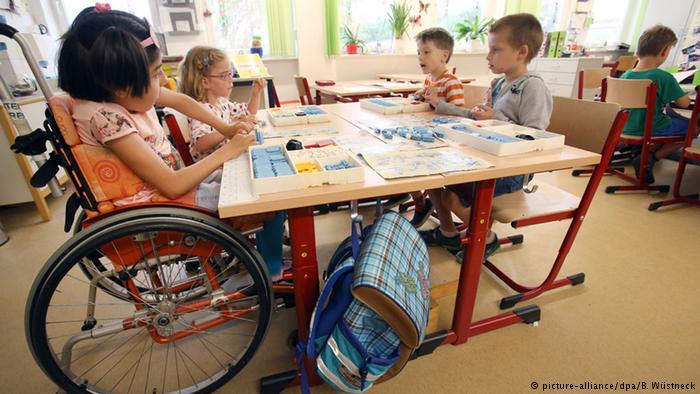 Ensure student has access to all areas of the classroom. Desk & chair height should be appropriate (see Seating, Positioning, and Mobility AT Discovery Page). Having all supplies readily available at the desk reduces the need for the student to maneuver through the room. Having a turn-in folder attached to the side of the student’s desk so he does not need to navigate thru the room multiple times throughout the day. Ensure that the “board” is the appropriate height for the student to participate in learning activities. Rearrange the room to allow access to all areas the student will need to visit.
Ensure student has access to all areas of the classroom. Desk & chair height should be appropriate (see Seating, Positioning, and Mobility AT Discovery Page). Having all supplies readily available at the desk reduces the need for the student to maneuver through the room. Having a turn-in folder attached to the side of the student’s desk so he does not need to navigate thru the room multiple times throughout the day. Ensure that the “board” is the appropriate height for the student to participate in learning activities. Rearrange the room to allow access to all areas the student will need to visit.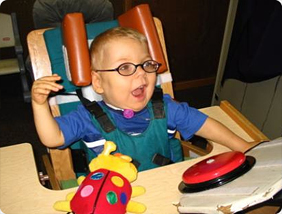 A preschool student high muscle tone due to Cerebral Palsy may have difficulty playing with toys in the preschool classroom. The student has general gross motor movement at the shoulder, hands are either in a fist or fingers extended resulting in inability to manipulate toys. He has movement at his hips which results in his ability to lift his foot up. He has fairly good control of facial muscles.
A preschool student high muscle tone due to Cerebral Palsy may have difficulty playing with toys in the preschool classroom. The student has general gross motor movement at the shoulder, hands are either in a fist or fingers extended resulting in inability to manipulate toys. He has movement at his hips which results in his ability to lift his foot up. He has fairly good control of facial muscles.


 The student has high muscle tone resulting in minimal control of arms and legs. He uses a wheelchair for mobility. Although he is sometimes difficult to understand he is verbal and is able to make his thoughts and needs known. He gets frustrated, though, that he is unable to raise his hand to get his teacher’s attention. He has a one-on-one paraprofessional to assist with physical tasks but he doesn’t like for the paraprofessional to answer his questions instead of him getting assistance from the teacher. He would also like to be able to participate when the teacher calls on students to answer questions but the teacher is not able to recognize that he would like to respond
The student has high muscle tone resulting in minimal control of arms and legs. He uses a wheelchair for mobility. Although he is sometimes difficult to understand he is verbal and is able to make his thoughts and needs known. He gets frustrated, though, that he is unable to raise his hand to get his teacher’s attention. He has a one-on-one paraprofessional to assist with physical tasks but he doesn’t like for the paraprofessional to answer his questions instead of him getting assistance from the teacher. He would also like to be able to participate when the teacher calls on students to answer questions but the teacher is not able to recognize that he would like to respond
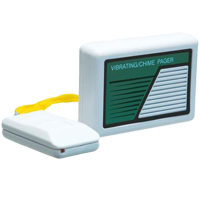

 Student has an above average IQ and does not need assistance with academic concepts. Modifications and accommodations for completing work have increased through the years as his disease has progressed. It has progressed to the point that he has little movement below his shoulders. He has a paraprofessional with him (or near him) all the time to assist with physical needs and toileting. She gets his books and computer out of his backpack and sets things up for him. He recently began using Bookshare and accessing textbooks on CD. Currently he dictates all of his work and the teacher or the paraprofessional acts as a scribe. He would like to be more independent in completing his work.
Student has an above average IQ and does not need assistance with academic concepts. Modifications and accommodations for completing work have increased through the years as his disease has progressed. It has progressed to the point that he has little movement below his shoulders. He has a paraprofessional with him (or near him) all the time to assist with physical needs and toileting. She gets his books and computer out of his backpack and sets things up for him. He recently began using Bookshare and accessing textbooks on CD. Currently he dictates all of his work and the teacher or the paraprofessional acts as a scribe. He would like to be more independent in completing his work.
 Battery Interrupter
Battery Interrupter

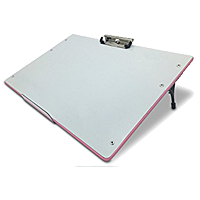





 Possible Recommendations:
Possible Recommendations:

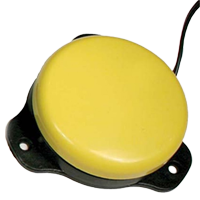
 He uses a wheelchair for mobility. He has movement at his shoulders, elbows and wrists but little functional grasp or finger isolation. He would like to be able to return to his role as a youth group leader at his church.
He uses a wheelchair for mobility. He has movement at his shoulders, elbows and wrists but little functional grasp or finger isolation. He would like to be able to return to his role as a youth group leader at his church.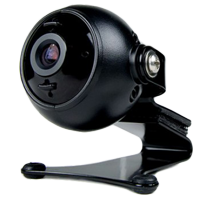


 She has been successful with this assistive technology for several years but has recently stopped doing the things she previously enjoyed. When asked about it by her children, she reported that her hands hurt from arthritis and she is unable to turn the switch on the lamp by her chair.
She has been successful with this assistive technology for several years but has recently stopped doing the things she previously enjoyed. When asked about it by her children, she reported that her hands hurt from arthritis and she is unable to turn the switch on the lamp by her chair.
